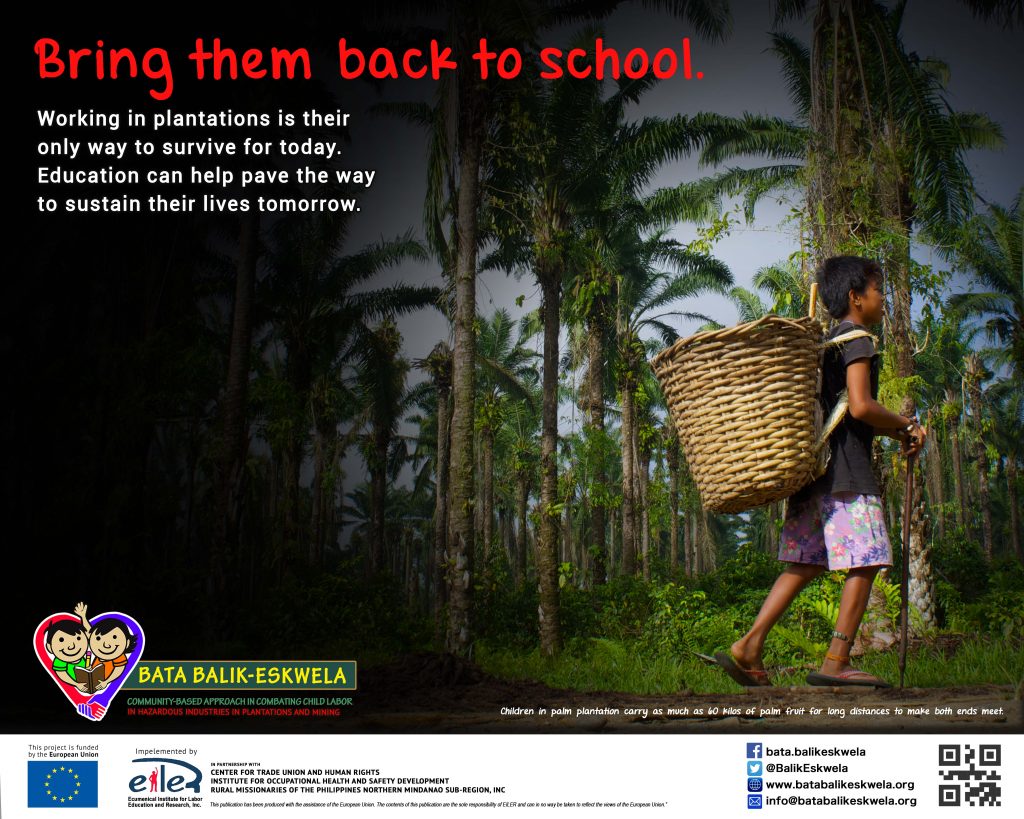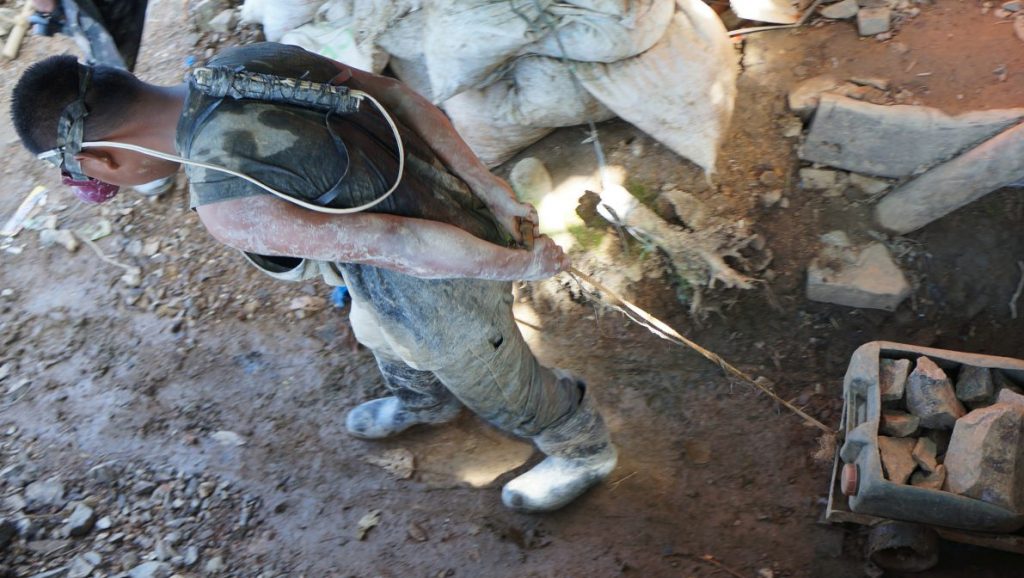
PHILIPPINES – A child miner pulls an improvised cart made from a gasoline container carrying heavy rocks. Child laborers in mines are at risk of severe injury and death, and face long-term health problems caused by back-breaking labor, constant exposure to dust and chemicals, and most of all mercury poisoning.
Child labor persists side by side with chronic poverty in the Philippines. While programs to address child labor by the government, international agencies and civil society groups are in place, child labor is still worsening. Based on the latest official count as of 2011, there are 3.2 million child laborers who are mostly in hazardous work, out of the 5.5 million children at work.[1]
The problem of child labor lies deeply in the structural problems of the society, heavily connected to deeply rooted poverty and continuous non-inclusive growth in the economy. Other push factors of child labor include land-grabbing, low family income, lack of regular and decent jobs with living wages for parents, and low awareness on rights of children among poor families. This is aggravated as businesses and companies continue to exploit child laborers through lower wages, lack of benefits and protection, and weak government mechanisms and instruments to combat the employment of children. Child laborers are forced to leave their formal education and focus on their work, leaving them more vulnerable to abuses, violations and little chance and opportunity to have a better future.
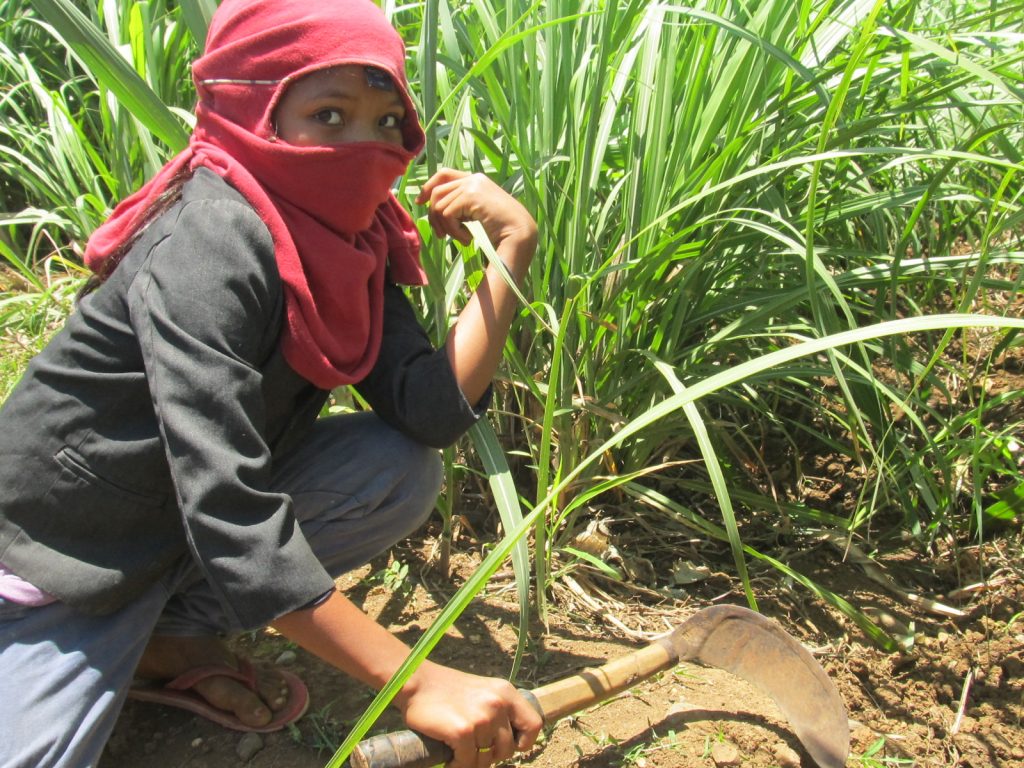
BUKIDNON – People in Don Carlos, Bukidnon depend mainly on agriculture and plantation work. Child laborers in sugarcane estates work in weeding, harvesting and fetching of water.
The number of children working in hazardous industries stands at 2.99 million (2011), an increase from 2.2 million in 1995. Child labor is prevalent in rural areas, particularly in mining sites and in agricultural plantations (sugarcane, banana, palm oil). A study conducted by EILER indicates that child labor in the country has worsened as reflected in:
Longer working hours of children, multiple jobs juggled by child laborers, and exposure to social hazards (such as use of illegal drugs) and occupational health and safety hazards.
One out of five households surveyed for the study showed incidence of child labor.
High tendency for child laborers to stop schooling. Child laborers normally work for an average of ten hours daily for a tiny fraction of the prevailing minimum wage and extreme cases of 24-hour shift in mining, even as the magnitude of their work is comparable to those of adults.
Ninety-six percent (96%) of households surveyed were living below the poverty thresholds of their region and have an average monthly family income of P1,000 – P3,000 (highest incidence of child labor at 40%).
Seventy-seven percent (77%) of households surveyed do not own land and has no accessibility to land.
The children and their families have no means to escape the vicious cycle of generational poverty as child laborers work the same kind of low-income, labor-intensive jobs and generate just enough income to eat and work the next day. Unable to finish basic education, they are unable to apply to stable work which demands technical skills they do not have.
Children working in hazardous industries are exposed to the dangers and perils of heavy physical work, exposure to chemicals and unsafe working conditions. At their tender age, these children are deprived of their right to education, right against economic exploitation and right to have everything they need to have a better future.
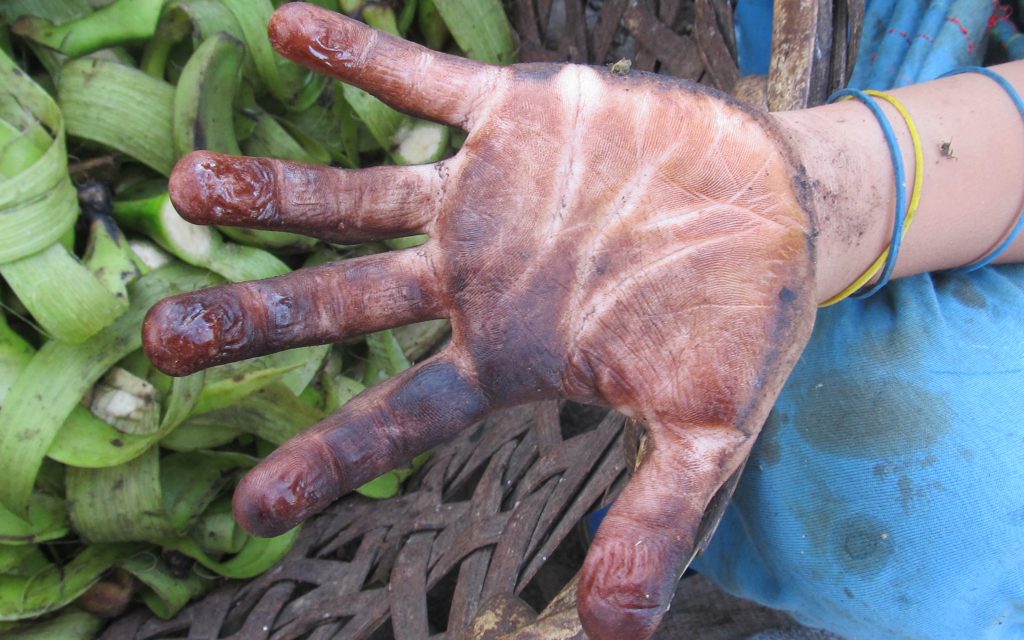
DAVAO DEL NORTE – Child laborers in banana plantations often serve as fruiters, harvesters, haulers, loaders, and uprooters. Over time, the children have sustained injuries from weeding, harvesting, bagging and de-leafing work.
End poverty. End child labor.
November 20, 2014 marked the 25th year since the U.N. General Assembly adopted the Convention on the Rights of Child (CRC). Throughout the years, there have been significant achievements on upholding the rights of children worldwide, but much has to be done to address the root causes of child labour and build actions to end its worst forms.
The Ecumenical Institute for Labor Education and Research (EILER) with support from the European Union under the European Instrument for Democracy and Human Rights (EIDHR) implemented “Bata Balik-Eskwela: Community-based Approach in Combating Child Labor in Hazardous Industries in Mining and Plantations” from 2013 to 2016 to help curb child labor in Caraga Region, Bukidnon, Camarines Norte, Davao Del Norte, Compostela Valley and Negros Occidental through education and building community-based support network for child laborers and their families.
Read Bittersweet: Combatting Child Labour on the Sugarcane Plantations in the Philippines from the European Commission website.
Watch “Dula-anan” (2016) video documentary on the campaign to end child labor and the Bata Balik-Eskwela Program.
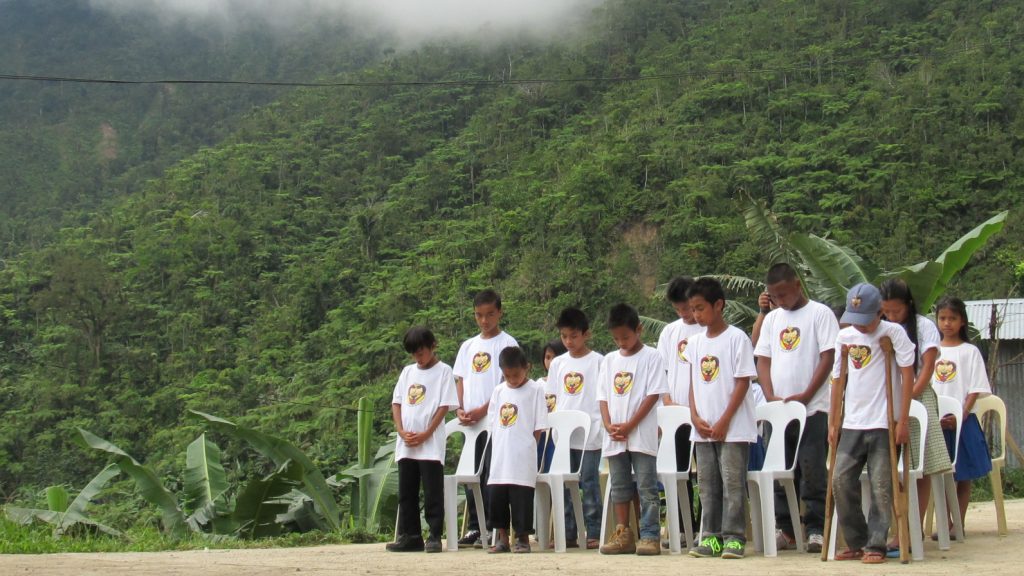
COMPOSTELA VALLEY – Beneficiaries of Bata Balik-Eskwela Program in Southeastern region of the Philippines start their graduation ceremony at the open court of their rural community (on top of Mt. Diwalwal) with a prayer.
The project aimed to reintegrate child laborers to formal education through the establishment of Learning Centers, creation of a community-based support system and advocating children’s rights. It had three (3) components namely Bata Balik-Eskwela Program (BBEP), Community-based Support Network Program (CBSP) and Public Awareness and Advocacy Program (PAAP).
Through the project and in cooperation with the Center for Trade Union and Human Rights, Institute for Occupational Health and Safety Development, Rural Missionaries of the Philippines Northern Mindanao Sub-region, and community organizations, six (6) Learning Centers were established to provide appropriate curriculum and school materials to the beneficiaries. At the end of the project, a total of 618 children enrolled in five (5) batches at each learning center and 518 of them completed the program.
[1] 2011 Survey on Children, National Statistics Office. http://web0.psa.gov.ph/content/number-working-children-5-17-years-old-estimated-55-million-preliminary-results-2011-survey

